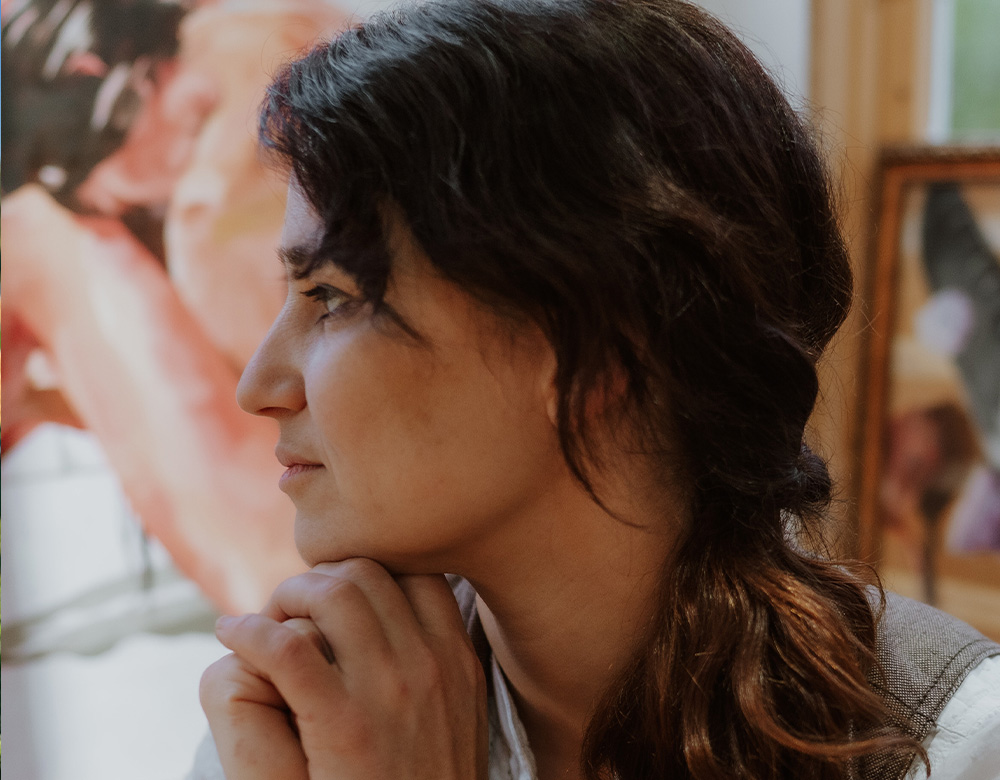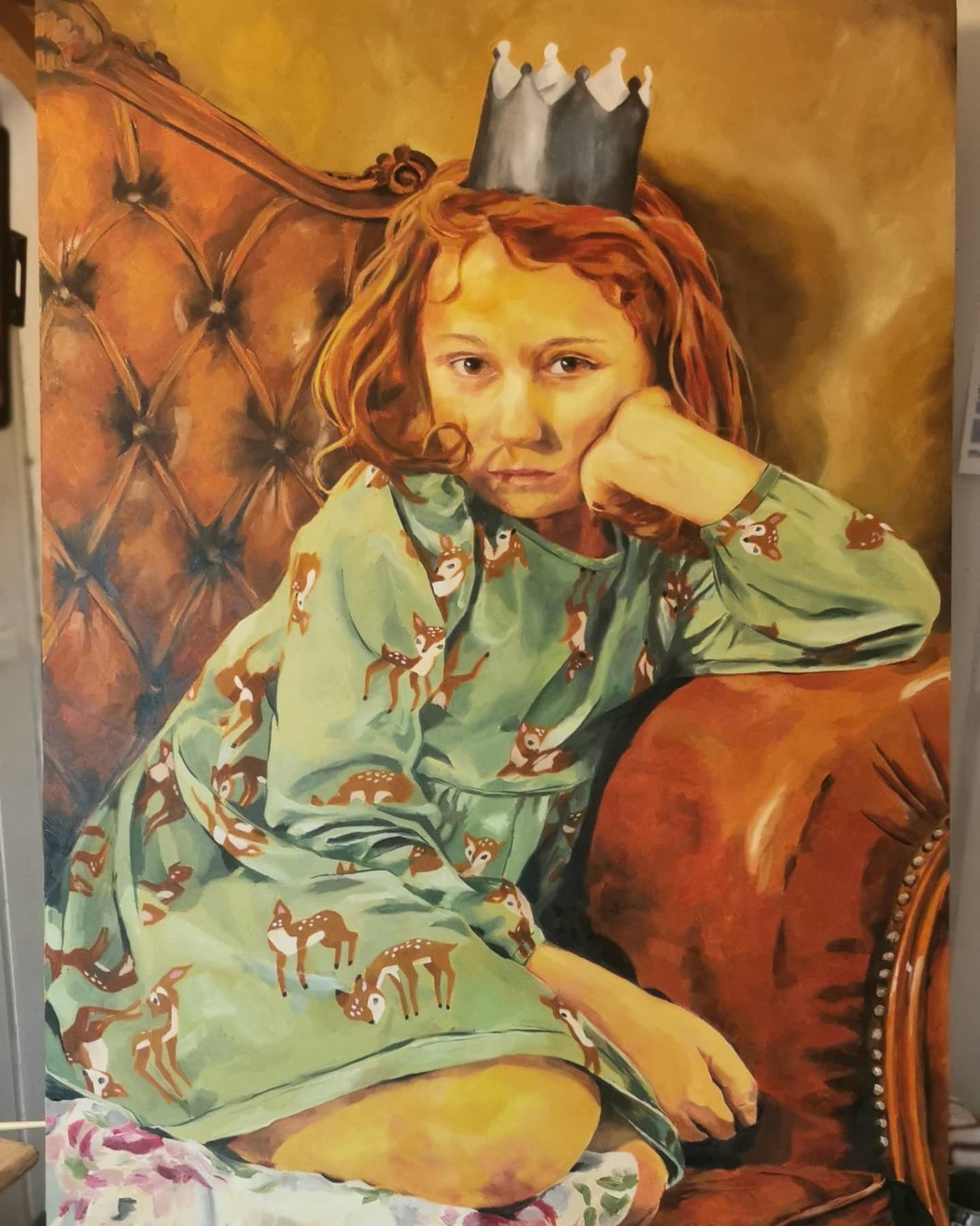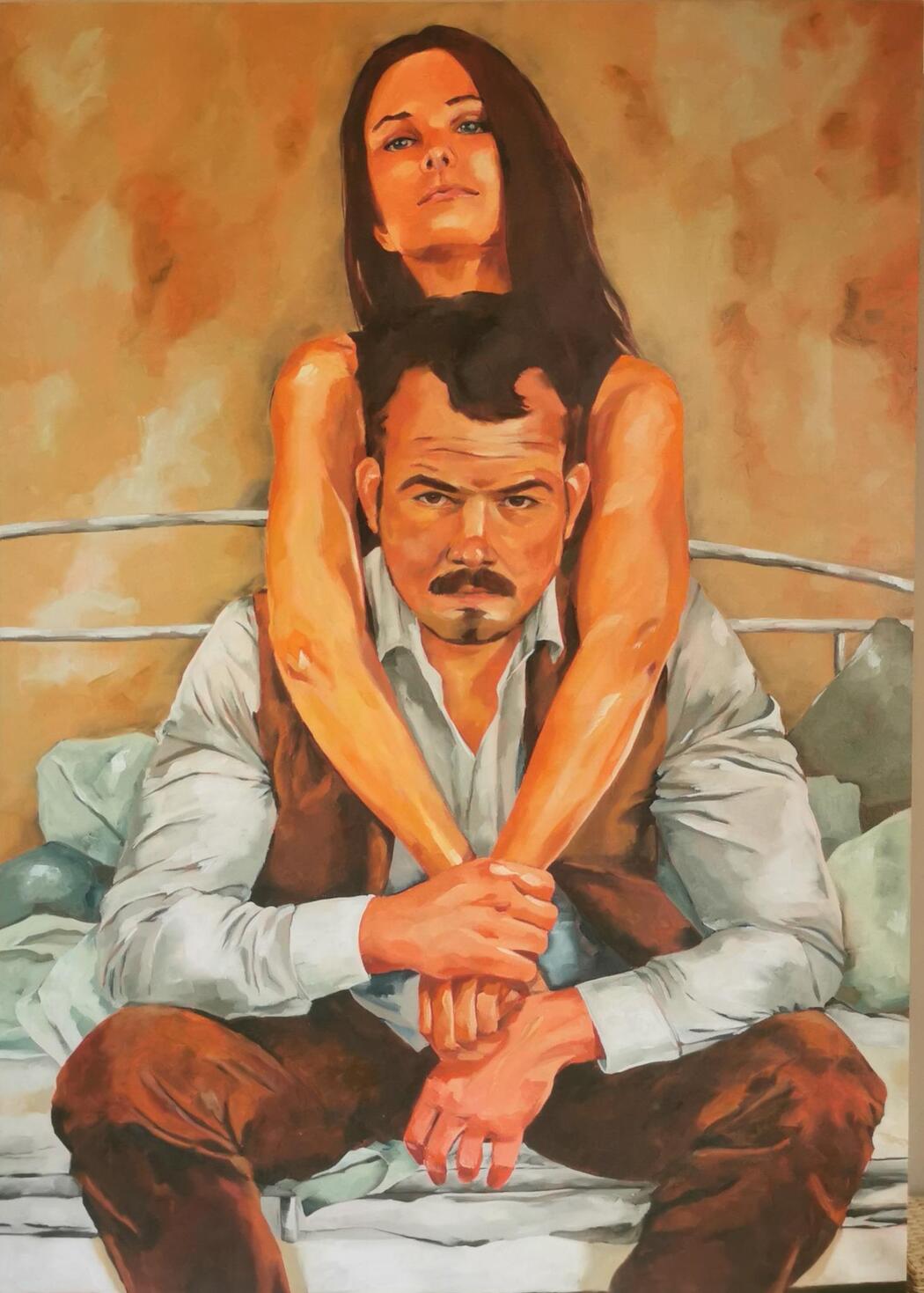Julia Ulrich
Year of Birth: 1980
Where do you live: I live in a self-built wooden house on the edge of a German forest, surrounded by nature. It’s a place of solitude and inspiration, where I grow my own food, care for my animals, and find the balance between simplicity and creativity.
Your education: I studied Fine Art at Falmouth University and completed additional private training with renowned artists such as Ryan Shultz (Chicago), Chris Guest (London), Henry Lamy (Lyon), Adebanji Alade (London), and Elly Smallwood (Canada).
Describe your art in three words: Contrasts – Narrative – Emotion
Your discipline: Oil Painting, Figurative Art
Website | Instagram

Your work often blends raw emotion and sensuality with poetic undertones. How do you go about balancing these elements in your paintings?
I find the contrast between raw emotion and sensuality particularly fascinating because life itself consists of opposites. Balance only emerges when we accept that every aspect has its counterpart, and instead of rejecting it, we integrate it into our lives. In my paintings, I explore this tension—between strength and fragility, dominance and vulnerability—because I believe that true beauty lies in the coexistence of these forces.
As a woman, I don’t feel the need to be only soft and delicate; strength is just as legitimate and can exist alongside femininity. This duality is what gives depth to my work. I let my brushstrokes reflect this dynamic, allowing raw textures and expressive gestures to merge with a certain poetic sensitivity. It is in this interplay that my paintings find their balance, just as we must find it within ourselves.
The themes of strength and fragility, masculinity and femininity, and dominance and submission are central to your “Of Lace and Leather” series. How do you approach these contrasts in the context of your personal experiences and your environment?
For many years, I struggled with not feeling “feminine enough.” As a woman who naturally builds muscle easily and enjoys weightlifting, I often felt out of place in the traditional perception of femininity. Additionally, I experienced challenges in a past relationship where my partner had difficulties accepting that I earned more money than he did in my main profession. He struggled with his self-imposed idea of masculinity and the expectations that came with it.
These experiences deeply influenced my work. Of Lace and Leather is about embracing the contrasts within ourselves—strength and fragility, masculinity and femininity, dominance and submission—without seeing them as contradictions. Today, I am in a truly equal and balanced relationship, where both partners are free to embrace their strengths without the fear of not fitting into a predefined role. I believe this balance is what makes us whole, and that’s what I seek to explore in my paintings.
 Julia Ulrich | Almost Forgotten
Julia Ulrich | Almost Forgotten
How has your lifestyle in the wooden house surrounded by nature influenced your artistic process and the themes you explore in your work?
A few years ago, my partner and I consciously chose this place to escape, at least to some degree, from the expectations and pace of society. The idea of living self-sufficiently and in deep connection with nature has always been a dream of mine, and now it has become reality. Together, we grow our own vegetables and care for our sheep and chickens, which help us maintain our small homestead.
What I love most is the light of the forest. The dramatic contrasts on a sunny day, when the sun breaks through the leaves, create a dance of light and shadow—pure poetry to me. I can hardly imagine being happy anywhere else. The forest fuels my passion for fairy tales and storytelling, and our regular evenings by the fire in our garden further satisfy my longing for simplicity.
This environment deeply influences my work, not only in the way I perceive light but also in the themes I explore. Fire and extreme lighting often find their way into my paintings, reflecting both the warmth and intensity that I experience in nature. Over time, I have also discovered wood as my preferred painting surface—it is the material I feel most connected to. Painting on wood allows me to merge my artistic expression with the raw, organic texture of the material, reinforcing the bond between my work and my surroundings.
There is something profoundly human about the balance between solitude and connection, independence and belonging—just like the balance I seek to capture in my paintings.
Your use of vibrant, warm tones creates a strong emotional pull in your work. Can you share more about your color choices and how they contribute to the narrative in your pieces?
I deliberately use earthy, warm, and natural tones because they reflect my reality. These colors are deeply rooted in my surroundings—the warmth of wood, the glow of fire, and the shifting light in the forest. Even during my photoshoots, I carefully consider contrast—not only in color but also in the materials of the models’ clothing. The interplay of soft fabrics and structured textures creates a visual tension that mirrors the themes I explore in my work.
By emphasizing these contrasts, I want to draw attention to the opposing forces in our lives—the moments of conflict and harmony, of strength and vulnerability. Rather than choosing uniform color palettes, I believe that stark contrasts create a more compelling sense of balance, just as life’s contradictions make it richer and more meaningful.
 Julia Ulrich | Bored princess
Julia Ulrich | Bored princess
Each of your pieces feels like an intimate narrative. How do you decide on the story you want to tell with each figure you paint?
I find inspiration in many different things. Sometimes, it’s a single object—like an old weapon I discover at a flea market. I start building a story around that item because I love objects with history. I can never pass by a flea market without searching for something that sparks my imagination. Other times, my inspiration comes from existing stories, like the fairy tales of the Brothers Grimm or even video games. I become fascinated by a character whose motives aren’t immediately clear to me, and I begin to explore their past and inner conflicts.
Once I have a concept, I look for the right model among my friends, carefully select clothing and props, and create a set that fits the story I want to tell. Before the photoshoot, I share the background narrative with my models, and most of the time, this short briefing—combined with mutual trust—is enough to capture exactly the emotion I need.
However, some of the most exciting moments happen when the energy in the room shifts unexpectedly. Sometimes, new characters and ideas emerge as if by magic during the shoot—things I hadn’t even considered before. Over time, I’ve learned that the best approach in these moments is to let go of my initial plan and follow the creative flow. Without a story in my mind, none of my paintings would exist.
How do you see your art challenging societal norms, and what kind of reactions do you hope to provoke in viewers?
It is important to me to question the socially ingrained patterns of masculinity and femininity while at the same time making a clear statement about both. I find it problematic to rigidly separate gender roles or to strive for a complete fusion of them. In my ideal vision, women should be able to embrace extreme femininity—flowing dresses, skirts, long hair—while still being strong and taking initiative. Likewise, men should be able to embody classic masculinity—whiskey in hand, strong physiques—while also allowing themselves moments of vulnerability and softness.
I want people to reflect on whether they spend too much time worrying about societal expectations when, deep inside, they already know who they are. My work is not about dictating what masculinity or femininity should look like, but rather about encouraging people to embrace all facets of themselves. It is time to love and express who we are—without fear, without restriction.
 Julia Ulrich | On the path figurative painting
Julia Ulrich | On the path figurative painting
Can you tell us more about the journey that led you from your Fine Art degree to working with such renowned artists and exhibiting internationally?
I always wanted to be an artist. Even as a child, it was my dream. But, understandably, that’s not always the career path parents envision for their children. So, I chose the responsible route and studied to become a teacher—with art as my main subject. However, I quickly realized that this path, while fulfilling in many ways, left me artistically unsatisfied.
I knew I had to take direct action. I started reaching out to artists like Ryan Shultz (Chicago), Chris Guest (London), and Henry Lamy (Lyon), asking them for private lessons. With every bit of money I had, I traveled to these incredible painters, learning as much as I possibly could. I was like a sponge, absorbing every bit of knowledge they were willing to share.
I will never forget one of my birthdays, which I spent entirely with Adebanji Alade (London). From morning until night, we sat in the London Underground, sketching passengers until my hands could barely hold the pencil anymore. It was an unforgettable day—one that shaped my journey as an artist. Today, some of these artists, like Elly Smallwood (Canada), have become dear friends.
Then, one Sunday morning, years later, my son asked me: “Mom, if you had a million dollars, what would you do?” Without hesitation, I said: “I would study Fine Arts.” He paused, thought for a moment, and then asked: “So… why don’t you just do it?”
I started crying. The next day, I enrolled in the Fine Arts program at Falmouth University through their online program. Sometimes, it takes the simple wisdom of a child to make us see the world as it truly is.
And today? Today, I exhibit my paintings at art fairs and galleries, I sell my work regularly, and I am completely at peace with every life decision I have made.
 Julia Ulrich | Whos the villain
Julia Ulrich | Whos the villain

Leave a Reply